/タカオネ 2021
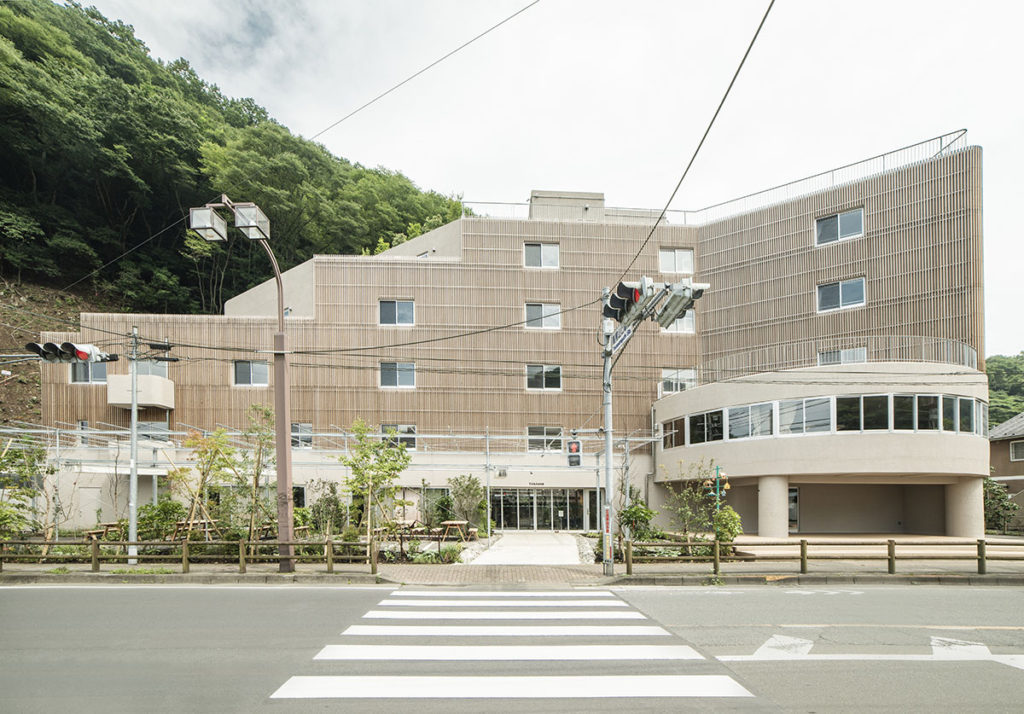
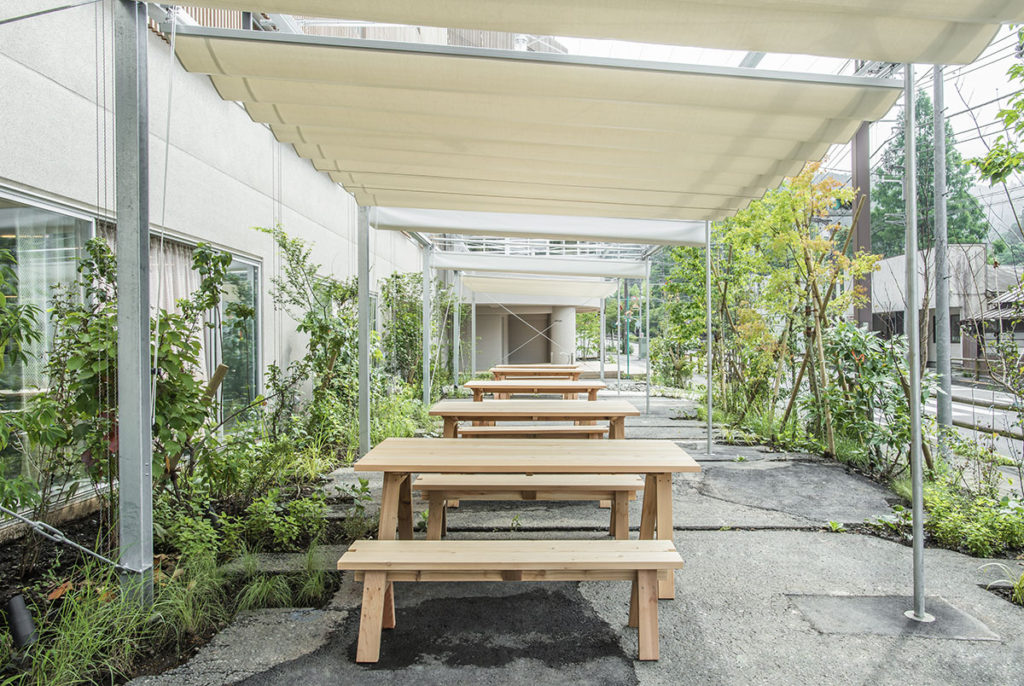
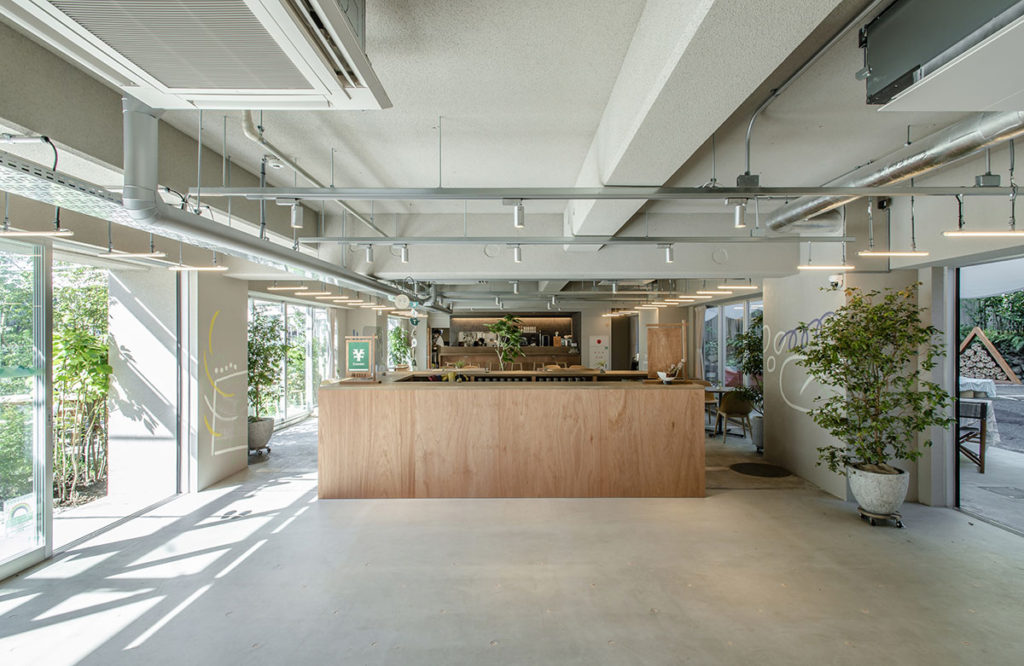
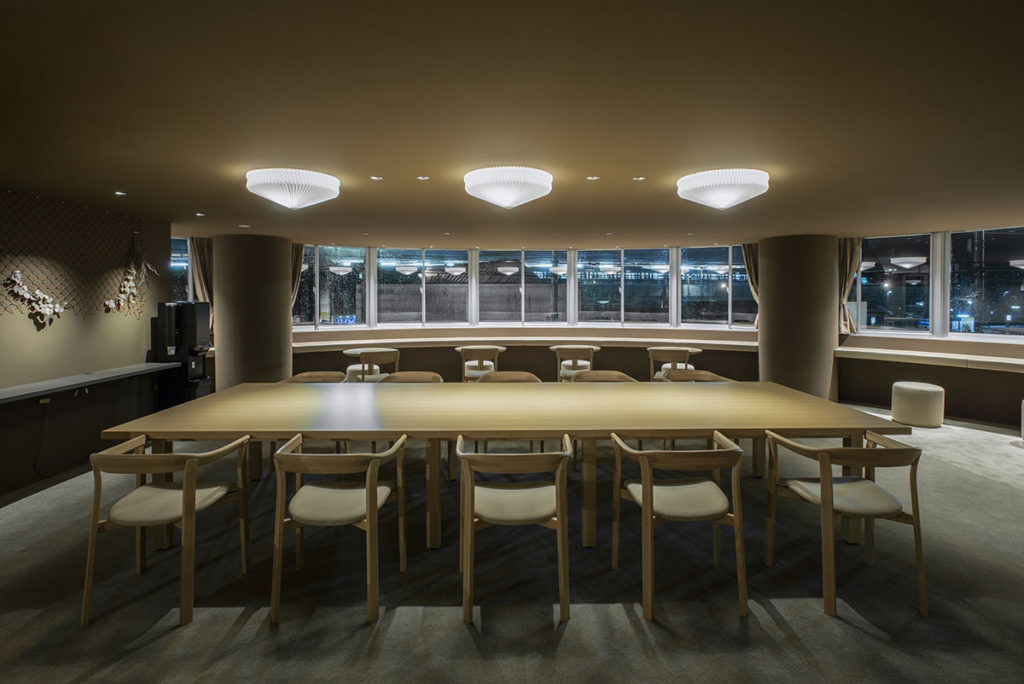
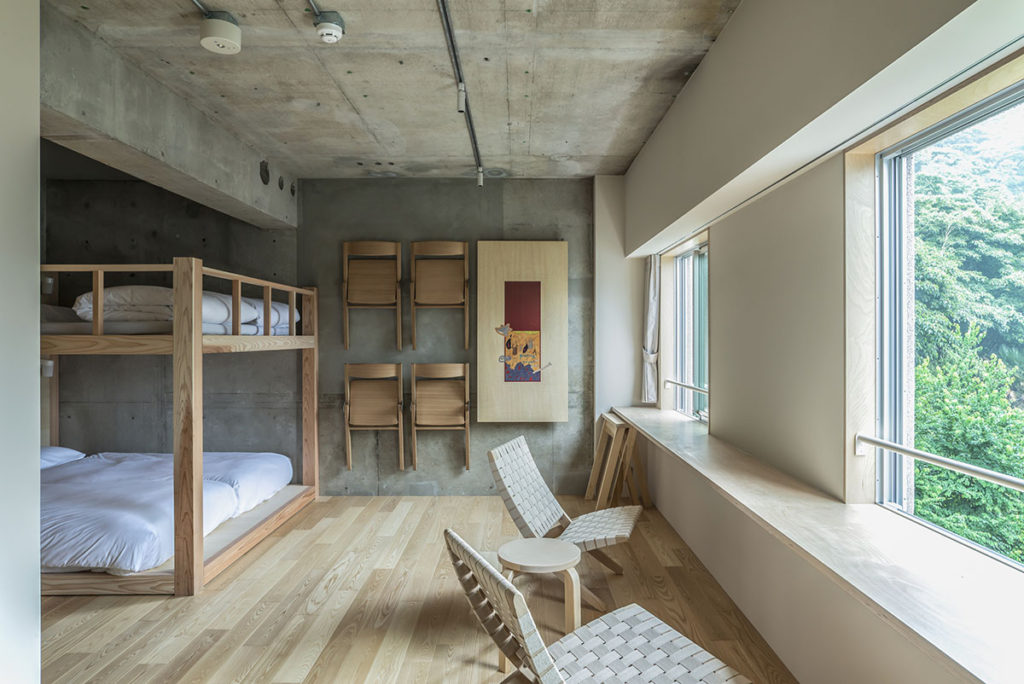
町と自然の境界を設計する:
新宿から電車で1時間、京王線の終着点である高尾山口駅の目の前にある宿泊施設の改修計画。夜明けと共に電車の発車音と鳥のさえずりが聞こえる場所にある。町が終わり森が始まる場所に建つホテルの在り方を考えた。目指したのは、単なる宿泊施設ではなく地域の新たな拠点となること。日帰り登山客が中心の高尾山で、山や川、町での過ごし方を再発見するための活動拠点であり、地域のプレイヤーが高尾の魅力を共有する交流拠点であり、都市生活者が高尾での生活をプレ体験する体験拠点でもある。
宿泊者でなくても多様な過ごし方ができる場所をつくった。道路に面する「まちのテラス」では、サイクリストや犬の散歩をする人などが自由に休み、日常的にものづくりワークショップが開かれる。半屋外だった部分を屋内にして、地域住民や宿泊者が出会うことを意図したウェルカムカウンターのあるカフェ「キッチン」とした。中庭は多種多様な活動を許容する屋外空間であり、地域の木を使った薪で焚き火を楽しめる。1階の開口を大きく開くと「まちのテラス」、カフェ、中庭が一体となる。
「キッチン」に優しい雰囲気を生み出すニットカーテンには、一部にニット工場の残糸を利用した。登山の疲れを視覚的に癒やすだけでなく、山を縫うように射す朝日で輝き、町側から受ける強い日差しを植栽と共に和らげ、山側と町側の境界面として両者との距離感を調整する。レセプションカウンターの背景となるテキスタイルは、既存の開口を生かし、背景から自然光を、室内から照明を受けるつくりにした。天気や時間に応じて変化する背景である。「まちのテラス」及び中庭のオーニングには、テント生地やワイヤー、ラフな金物を用いて、自由な屋外活動を下支えするおおらかな気配を生み出した。
人と自然と建物が一体となった生態系:
客室数や規模の調整、合宿など大人数での利用に対応するホールをつくるため、壁を解体する必要が生じ、館全体で耐震設計をしている。客室は片付けられる什器によって2人客にはぜいたくなリビングを、9人チームには多様な活動を許容する広間を提供する。客室入り口にルーバー戸を設け、高尾の谷筋を流れる風が客室内を通るように、また合宿時に部屋の中から友人らの声が聞こえる廊下とした。
解体時に出たRCガラや山で拾い集めた落ち葉、近隣の山の枝払い材や丸太などを内外装に活用した。裏山の土が中庭に落ちて堆積し、アスファルトの床から雑草が芽吹くように伸びる。そうした雑草の美しさと高尾の自然のたくましさを尊重し、既存のアスファルト床をカットして土壌を増やし、植栽の伸びしろを生み出した。高尾に自生する種を中心に、登山客の靴に付く種の混交を意識しつつも、靴洗い場を併設した。
運営スタッフや地域住民、登山客、薪、種子、落ち葉、RCガラ、卓越風など、「タカオネ」を取り巻くあらゆる登場人物を主客関係のない事象として捉え、またそれらが紡ぐネットワークを一つの生態系として、その系をより良く持続させる活動の素地となる施設像を考えた。いわば「タカオネ」を中心とした生態計画である。
Designing the boundary between town and nature:
This is a renovation project for an accommodation facility located right in front of Takaoyamaguchi Station, the terminus of the Keio Line, an hour train ride from Shinjuku. It is located in a place where the sound of trains departing at dawn and the chirping of birds can be heard. We thought about how the hotel should be built where the town ends and the forest begins. The goal was to create not just a lodging facility, but a new base for the community. It is a base for rediscovering ways to spend time in the mountains, rivers, and town, a base for local players to share the charms of Takao, and a base for city dwellers to experience life in Takao before they come to stay.
We have created a place where people can spend their time in a variety of ways, even if they are not guests. The “Terrace of the Town” facing the road is a place where cyclists, dog walkers, and others can freely rest, and manufacturing workshops are held on a daily basis. The semi-outdoor part of the building was turned into an indoor café “kitchen” with a welcome counter, where local residents and guests can meet. The courtyard is an outdoor space that allows for a variety of activities, and a fire pit made of wood from local trees can be enjoyed.
The knitted curtains that create a gentle atmosphere in the “kitchen” are partially made from leftover yarn from the knitting factory. The curtains not only visually soothe the tiredness of mountain climbers, but also soften the strong sunlight coming from the town side with plants, and adjust the distance between the mountain side and the town side as a boundary surface between the two. The textile background of the reception counter makes use of the existing opening to receive natural light from the background and illumination from the interior. The background changes with the weather and time of day. Tent fabrics, wires, and rough hardware were used for the awnings of the “Terrace in the Town” and the courtyard, creating a generous atmosphere that supports free outdoor activities.
An ecosystem where people, nature, and buildings are one:
In order to adjust the number and size of guest rooms and to create a hall for large groups such as a training camp, it became necessary to dismantle the walls, and the entire building was designed to be earthquake resistant. The guest rooms provide a luxurious living room for two guests with fixtures that can be put away, and a spacious room for a team of nine that allows for a variety of activities. Louvered doors at the entrances to the rooms allow the winds that flow through the Takao valley to pass through the rooms, and the corridors allow the campers to hear their friends’ voices from inside the rooms.
RC debris from demolition, fallen leaves collected from the mountains, and branches and logs from nearby mountains were used for the interior and exterior. Soil from the mountain behind the house fell and accumulated in the courtyard, and weeds sprouted and grew from the asphalt floor. Respecting the beauty of such weeds and the resilience of Takao’s nature, the existing asphalt floor was cut to increase the soil and create room for plantings to grow. A shoe washing station was added, while being conscious of the mix of species, mainly those native to Takao, that can be found on climbers’ shoes.
The facility was conceived as a place where all the characters surrounding “Takaone,” including management staff, local residents, climbers, firewood, seeds, fallen leaves, RC debris, and prevailing winds, could be viewed as events without subject-object relationships, and the network spun by them as an ecosystem that would serve as the foundation for activities to better sustain that system. In other words, it is an ecological plan with “Takaone” at its center.
所在地:東京都八王子市高尾町2264
主要用途:ホテル
計画種別:改修
構造・規模:鉄筋コンクリート造 地上5階
敷地面積:1,209.61m²
延床面積 2,126.68m²
客室数:28室
竣工年月:2021年6月30日
構造:田中哲也建築構造計画
設備:環境エンジニアリング
照明:フェノメノン ライティング デザイン オフィス
ランドスケープ:稲田ランドスケープデザイン事務所
テキスタイルデザイン:Haruka Shoji Textile Atelier
施工:京王建設株式会社
写真:soichiro suizu
企画・プロデュース:京王電鉄株式会社
企画・運営:株式会社R.project
総合企画監理:株式会社アワーカンパニー
アートディレクション:株式会社ユニエル

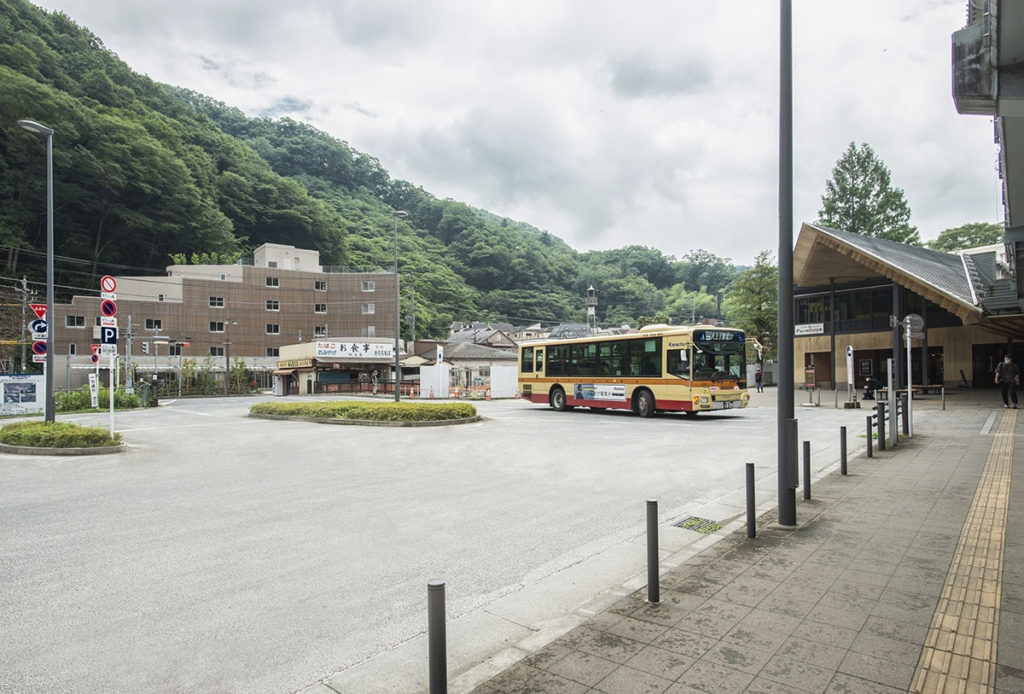

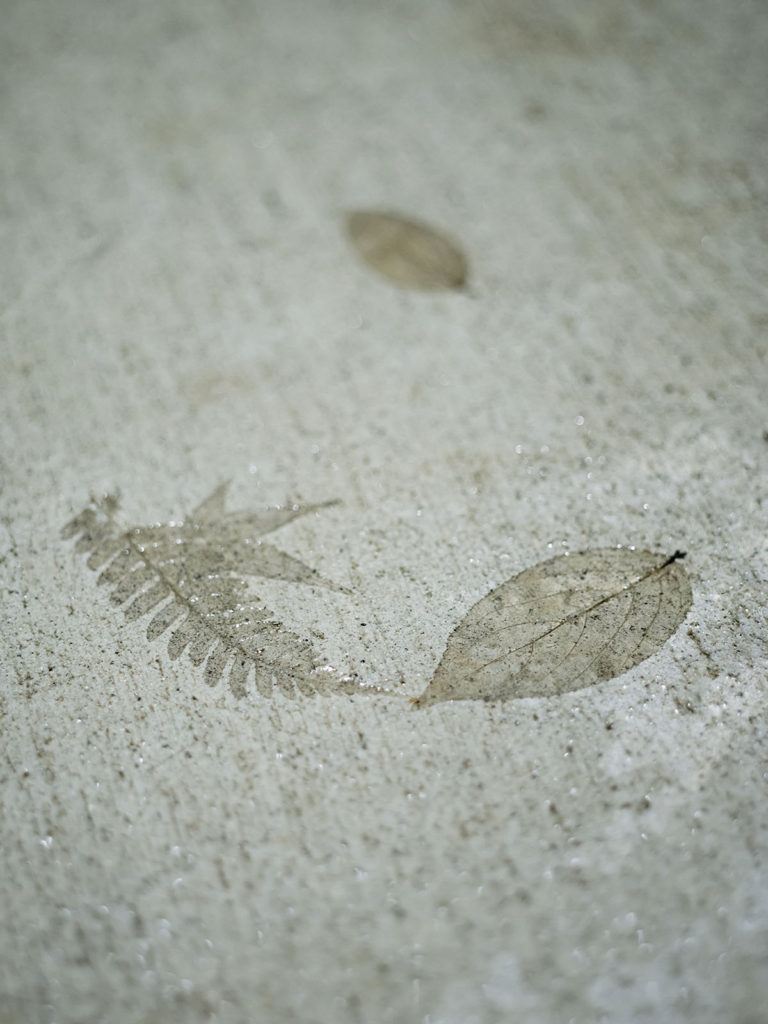


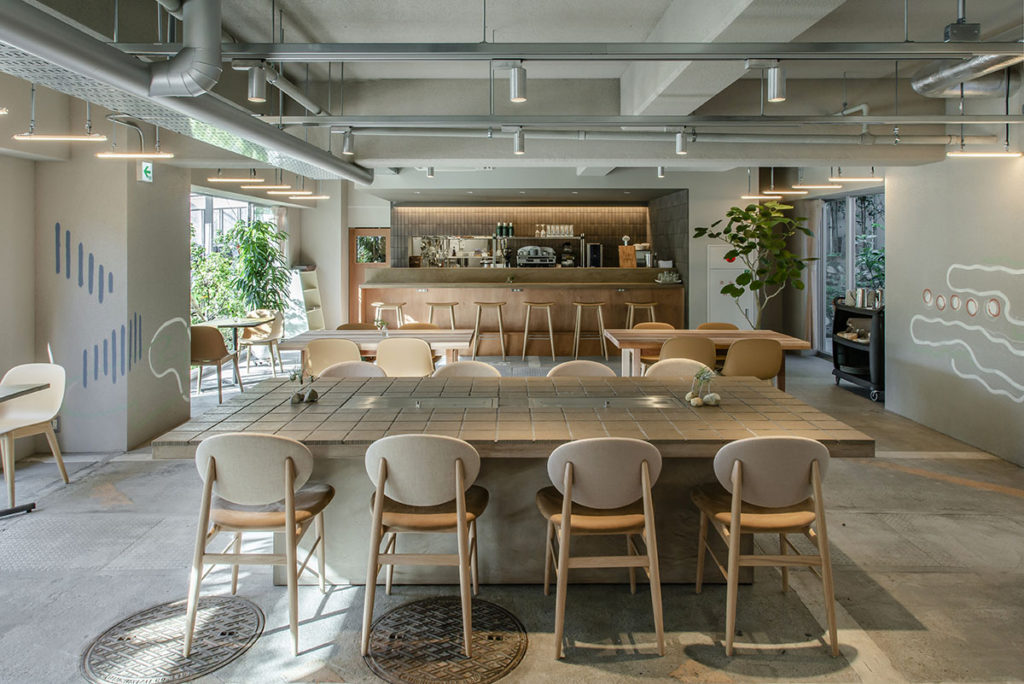
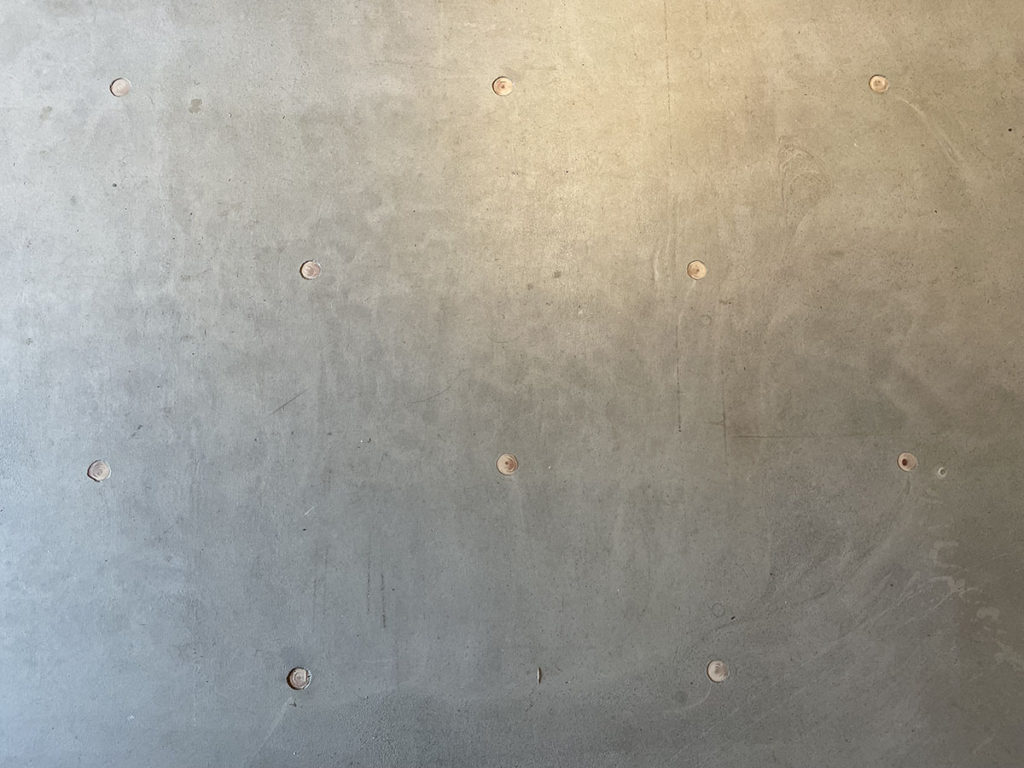
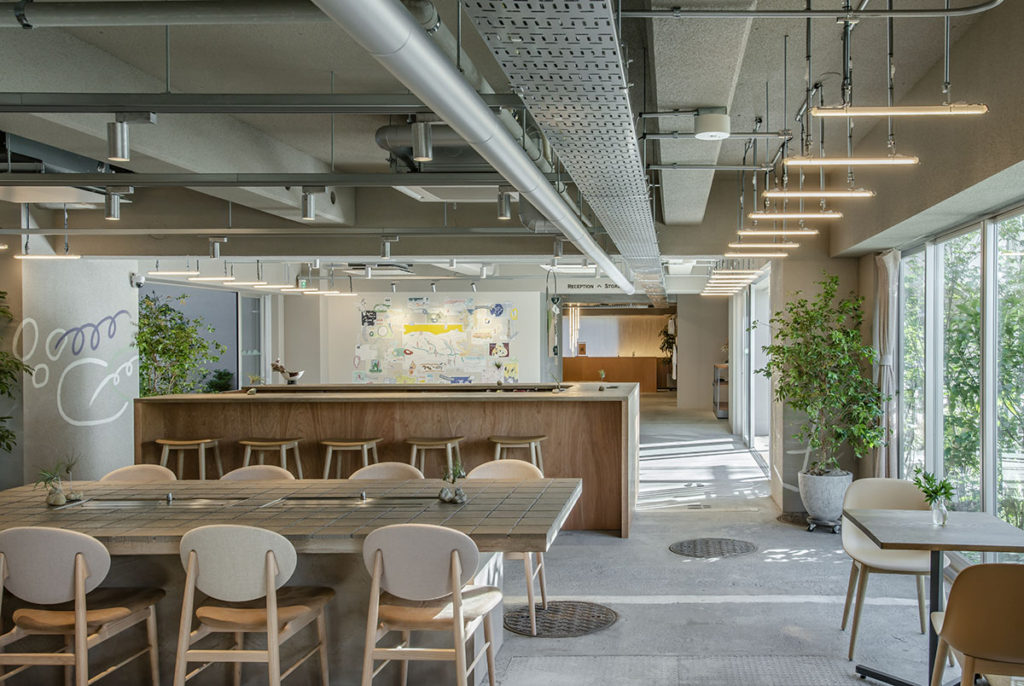
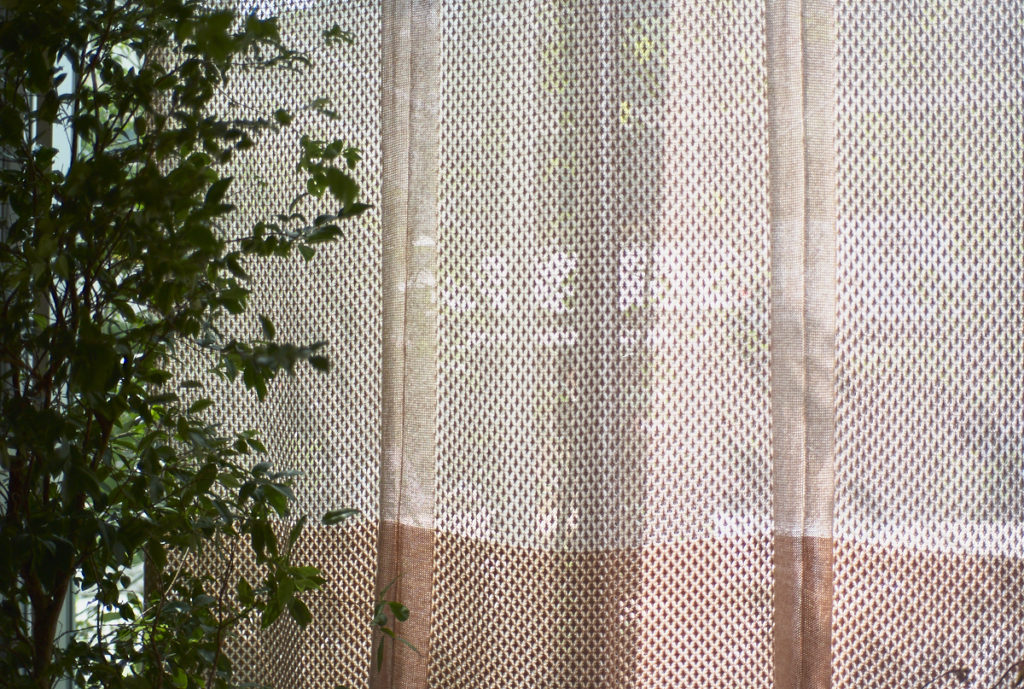
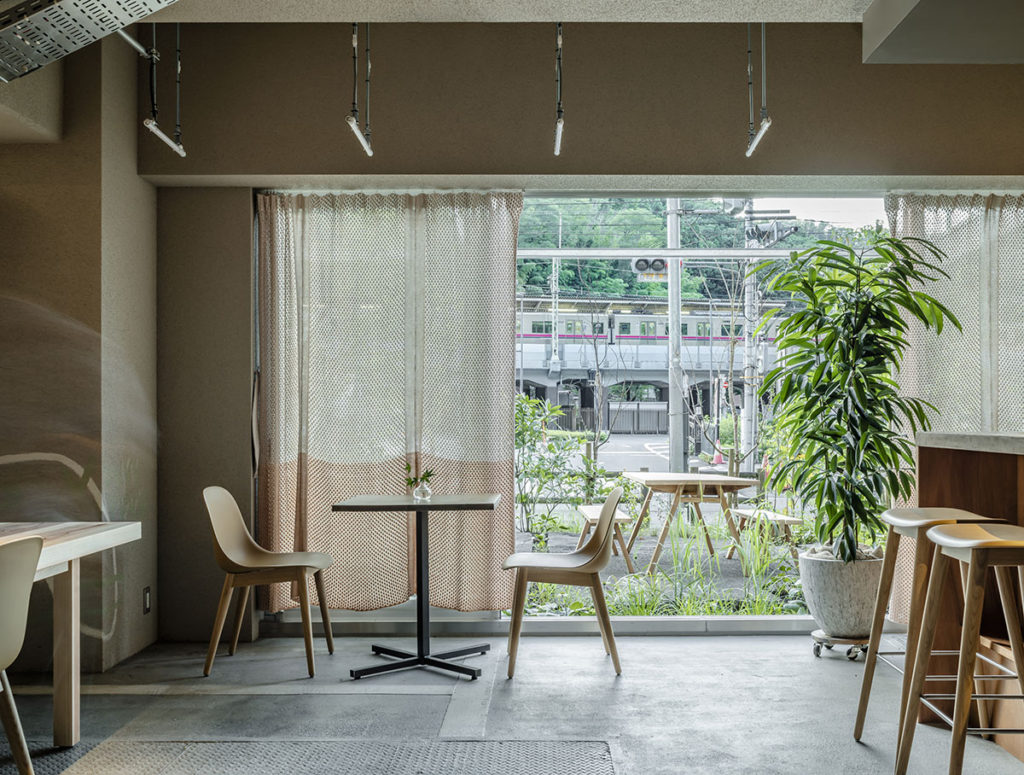
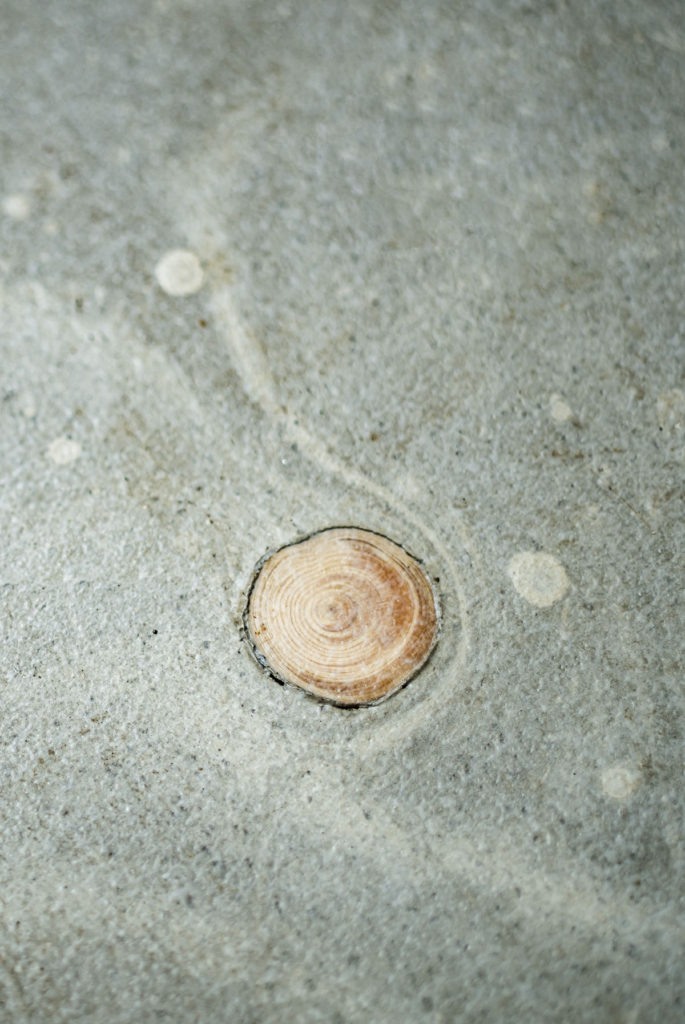
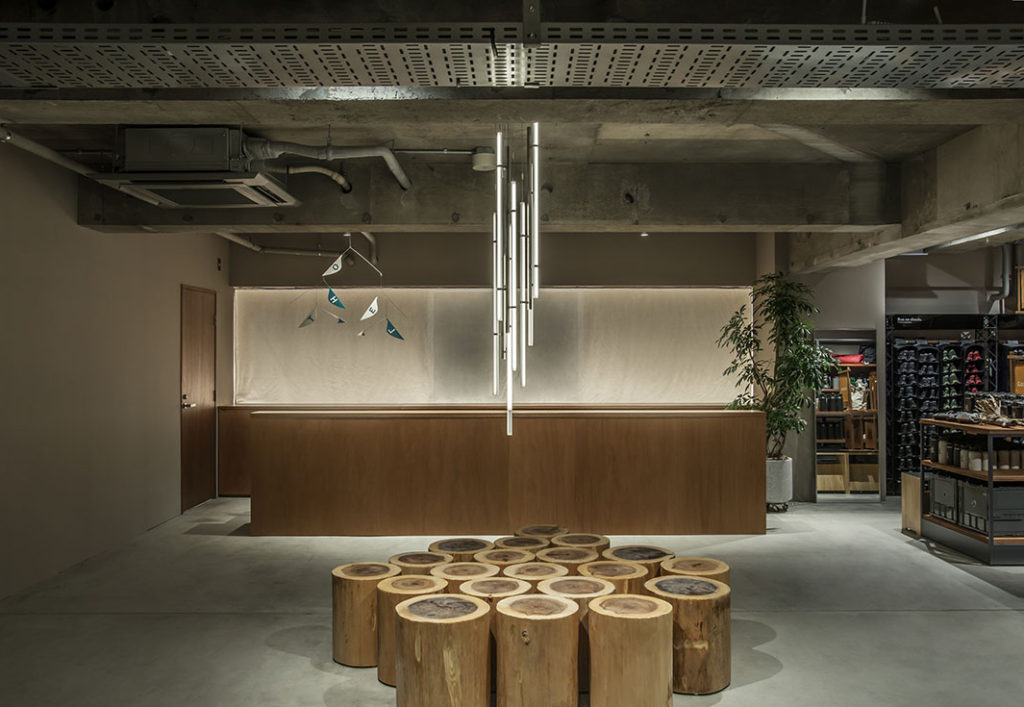
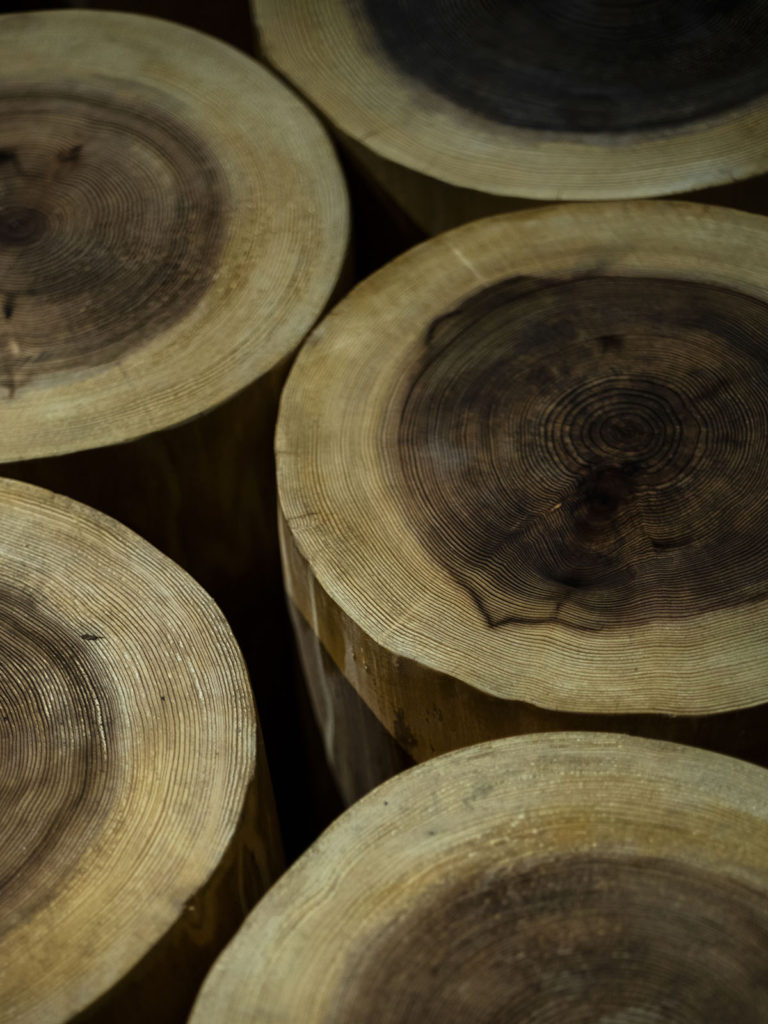
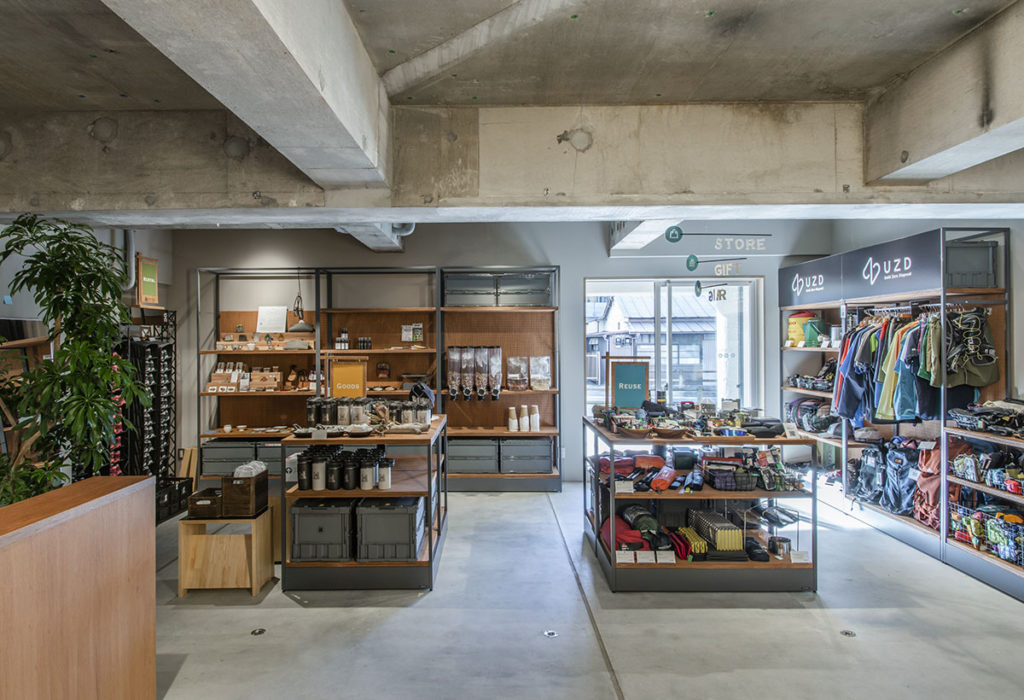
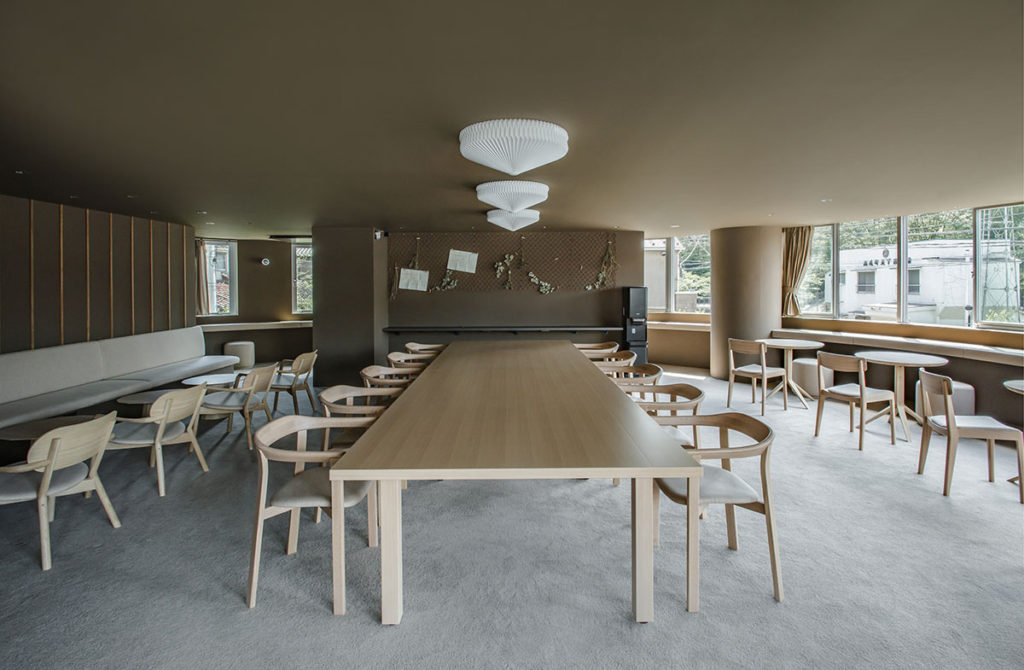
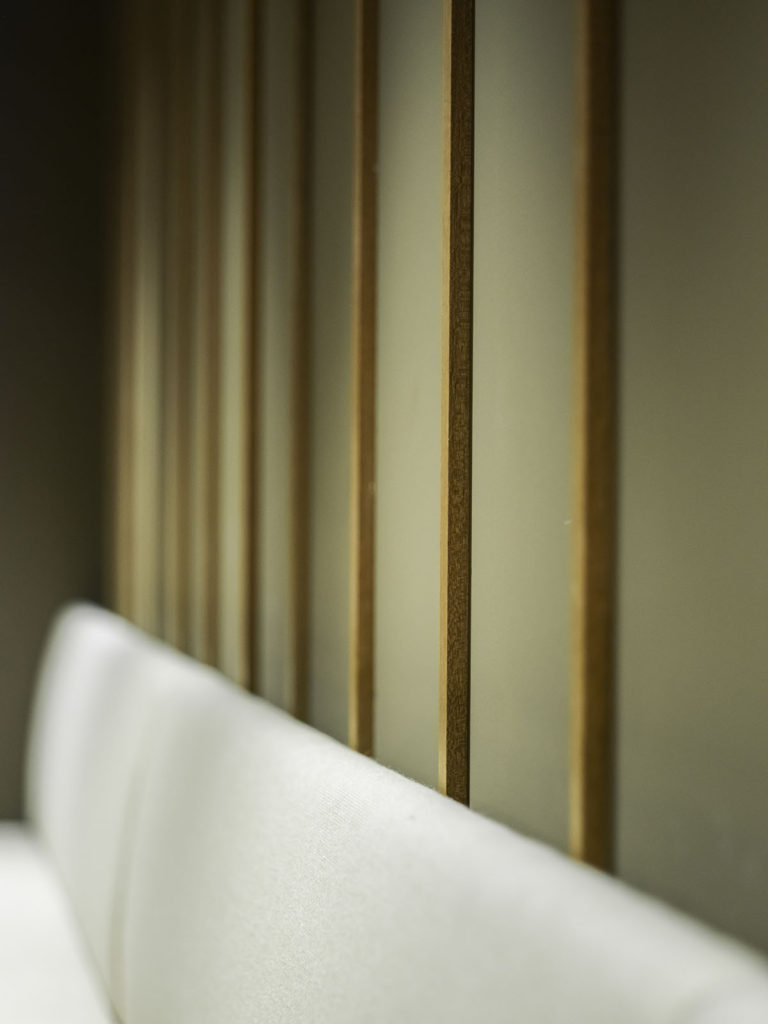
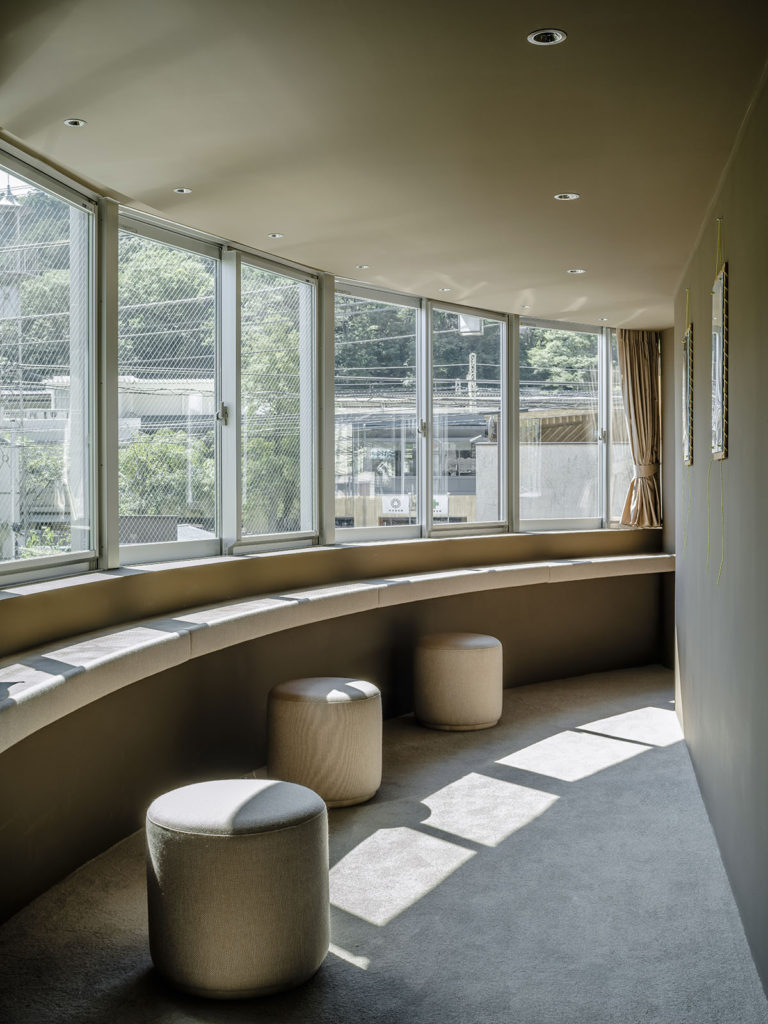
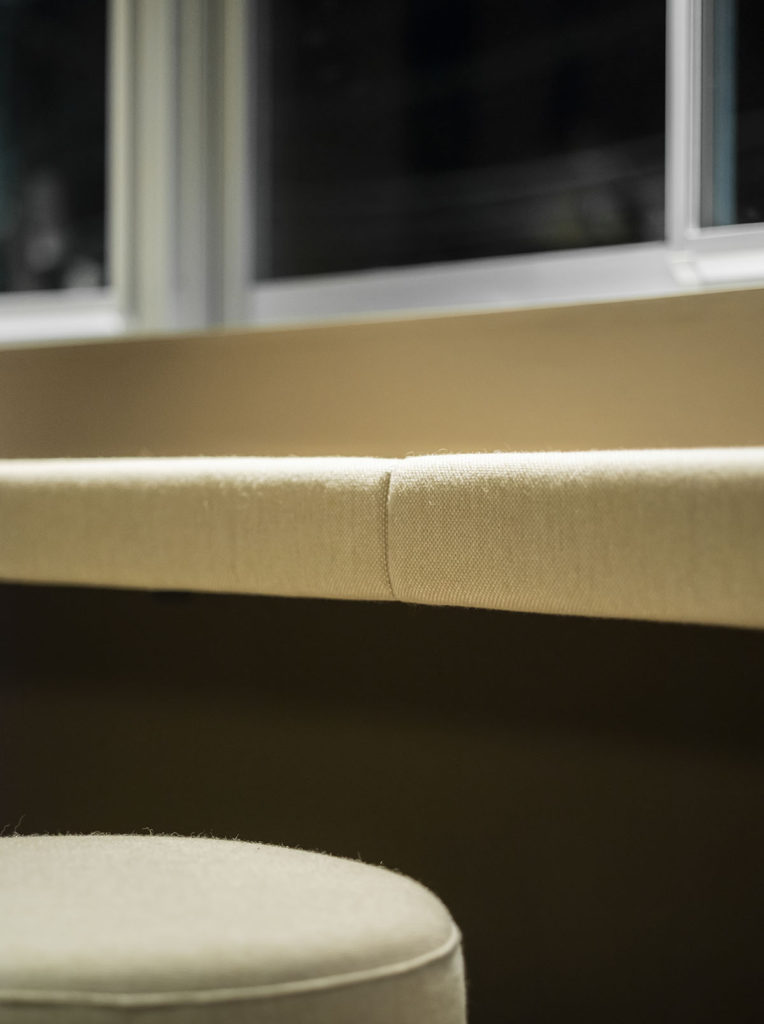
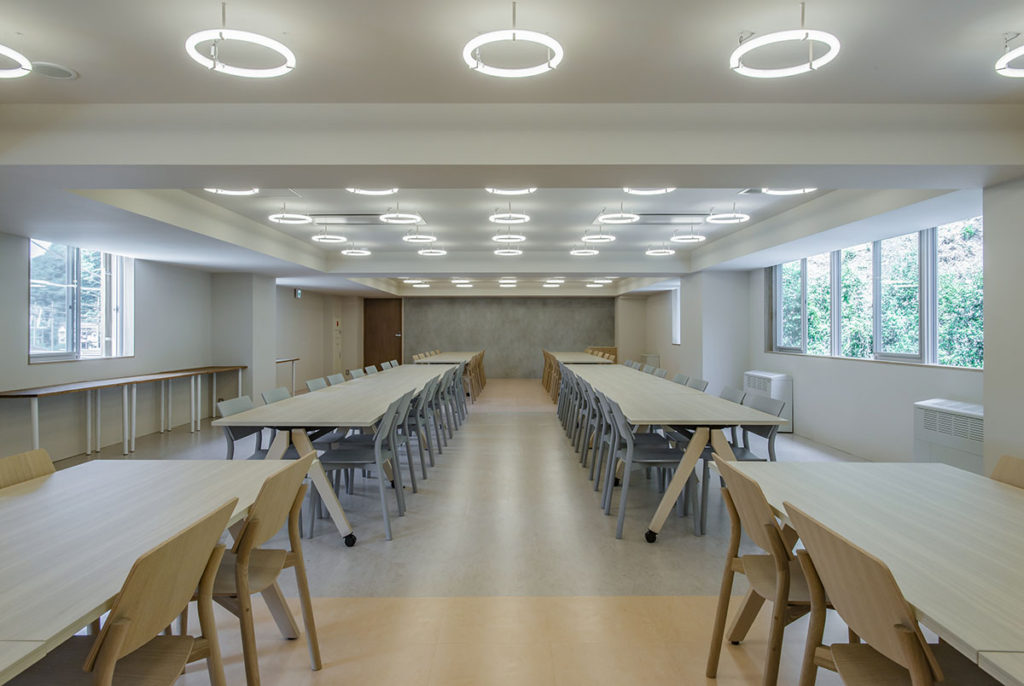
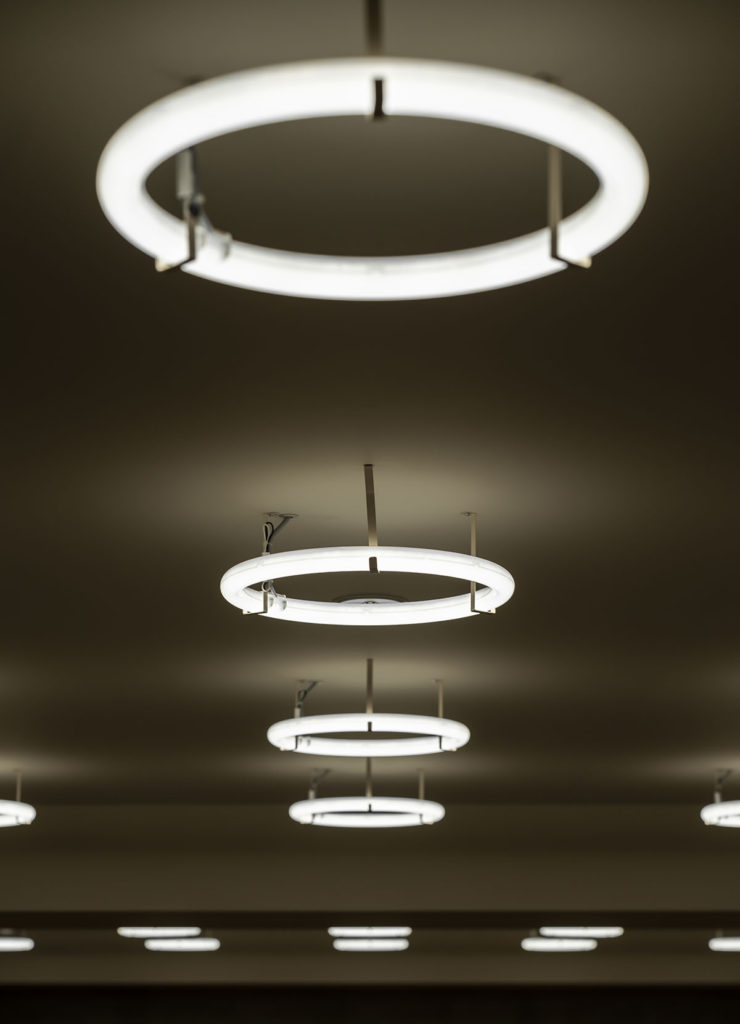
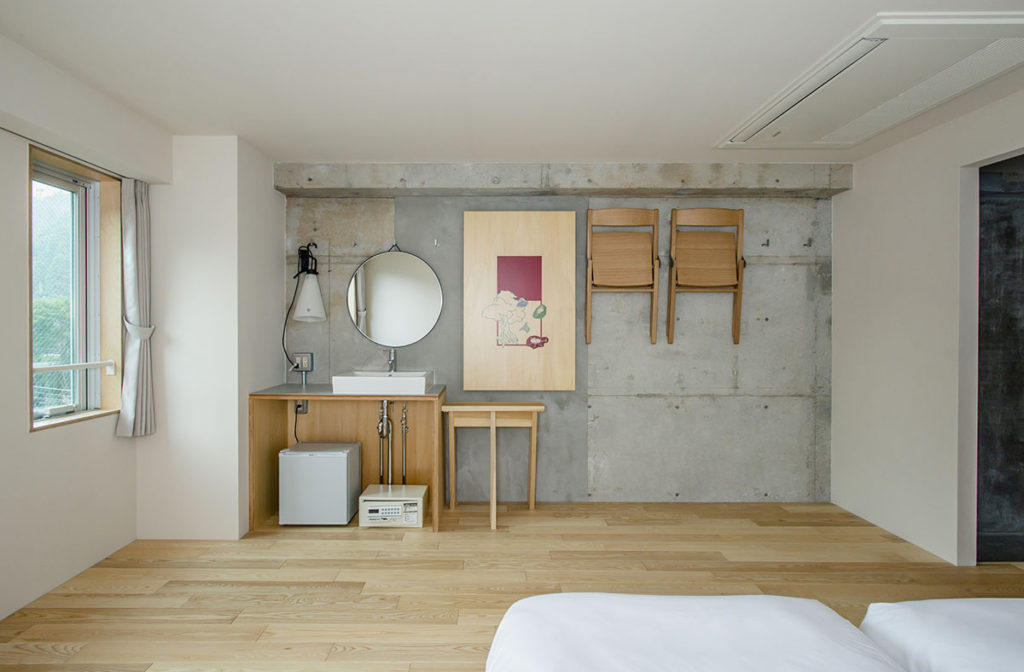
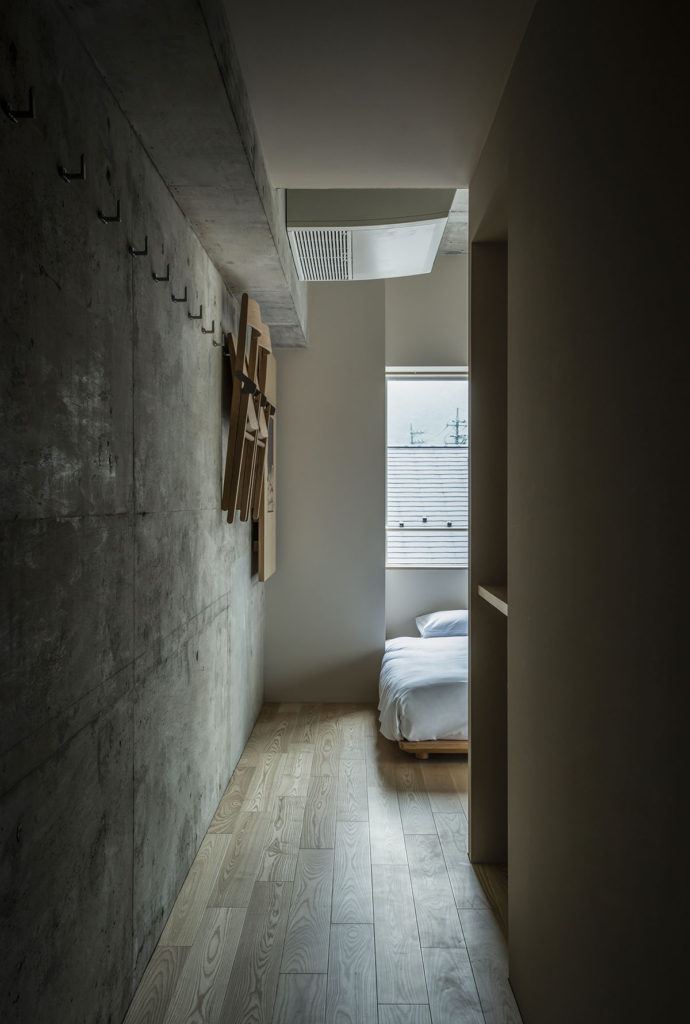
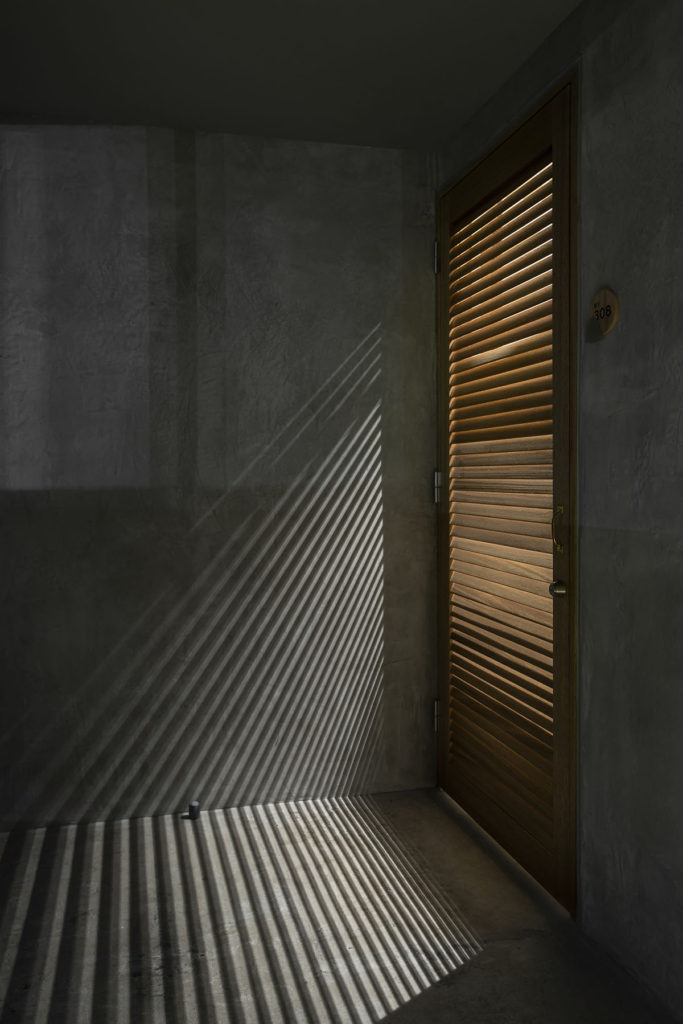
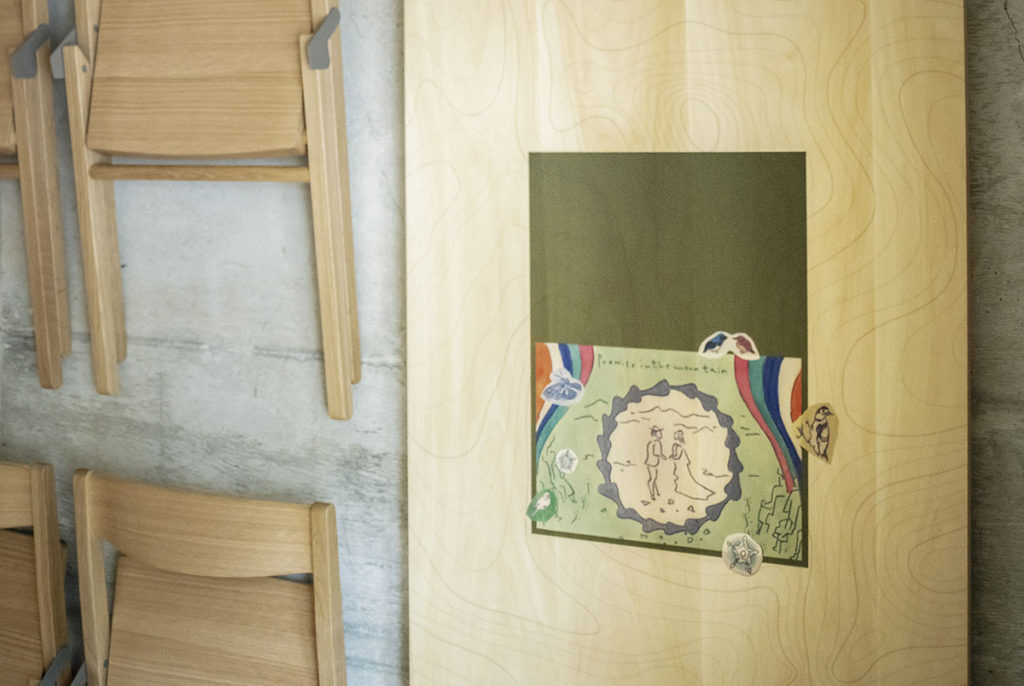
Film : tetu kimura
